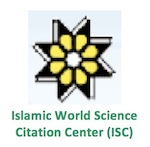


Google Scholar citation report
Citations : 5373
ASEAN Journal of Psychiatry received 5373 citations as per google scholar report
ASEAN Journal of Psychiatry peer review process verified at publons
| Journal Name | ASEAN Journal of Psychiatry (MyCite Report) | ||||
|---|---|---|---|---|---|
| Total Publications | 456 | ||||
| Total Citations | 5688 | ||||
| Total Non-self Citations | 12 | ||||
| Yearly Impact Factor | 0.93 | ||||
| 5-Year Impact Factor | 1.44 | ||||
| Immediacy Index | 0.1 | ||||
| Cited Half-life | 2.7 | ||||
| H-index | 30 | ||||
| Quartile |
|
- Anxiety Disorders
- Behavioural Science
- Biological Psychiatry
- Child and Adolescent Psychiatry
- Community Psychiatry
- Dementia
- Community Psychiatry
- Suicidal Behavior
- Social Psychiatry
- Psychiatry
- Psychiatry Diseases
- Psycho Trauma
- Posttraumatic Stress
- Psychiatric Symptoms
- Psychiatric Treatment
- Neurocognative Disorders (NCDs)
- Depression
- Mental Illness
- Neurological disorder
- Neurology
- Alzheimer's disease
- Parkinson's disease
Abstract
Psychodynamic View in a Case of Major Depressive Disorder with Self Harm Behaviour
Author(s): Ning Xin Gan*, Akramul Zikri Abd Malek and Seng Choi ChongIntroduction: Personality is defined as a person’s characteristic pattern of behaviors in the broad sense (including thoughts, feelings and motivation) and it is enduring over time. However, studies found that there could be an alternative concept regarding personality as state-dependent. Borderline personality organization is a pathological personality that was described by Otto Kernberg with a combined psychological-object relations approach that illustrated a group of patients characterised by ego weakness, primitive defensive operations and problematic object relations. Objective: This case report highlighted the psychodynamic concepts regarding borderline personality organization in a patient with major depressive disorder and self-harm behaviour. Result: A young female with major depressive disorder with self-harm behaviours. Her presenting symptoms could be clearly described by structural, descriptive and genetic-dynamic analysis of borderline personality organization that included nonspecific manifestations of ego weakness, specific defensive operations and pathological internalized object relations. Conclusion: Our female client responded well after receiving both pharmacotherapy and psychodynamic therapy for major depressive disorder. The features of borderline personality organization in her were resolving. This could suggest the alternative concept of personality as state-dependent rather than stable and enduring.


























